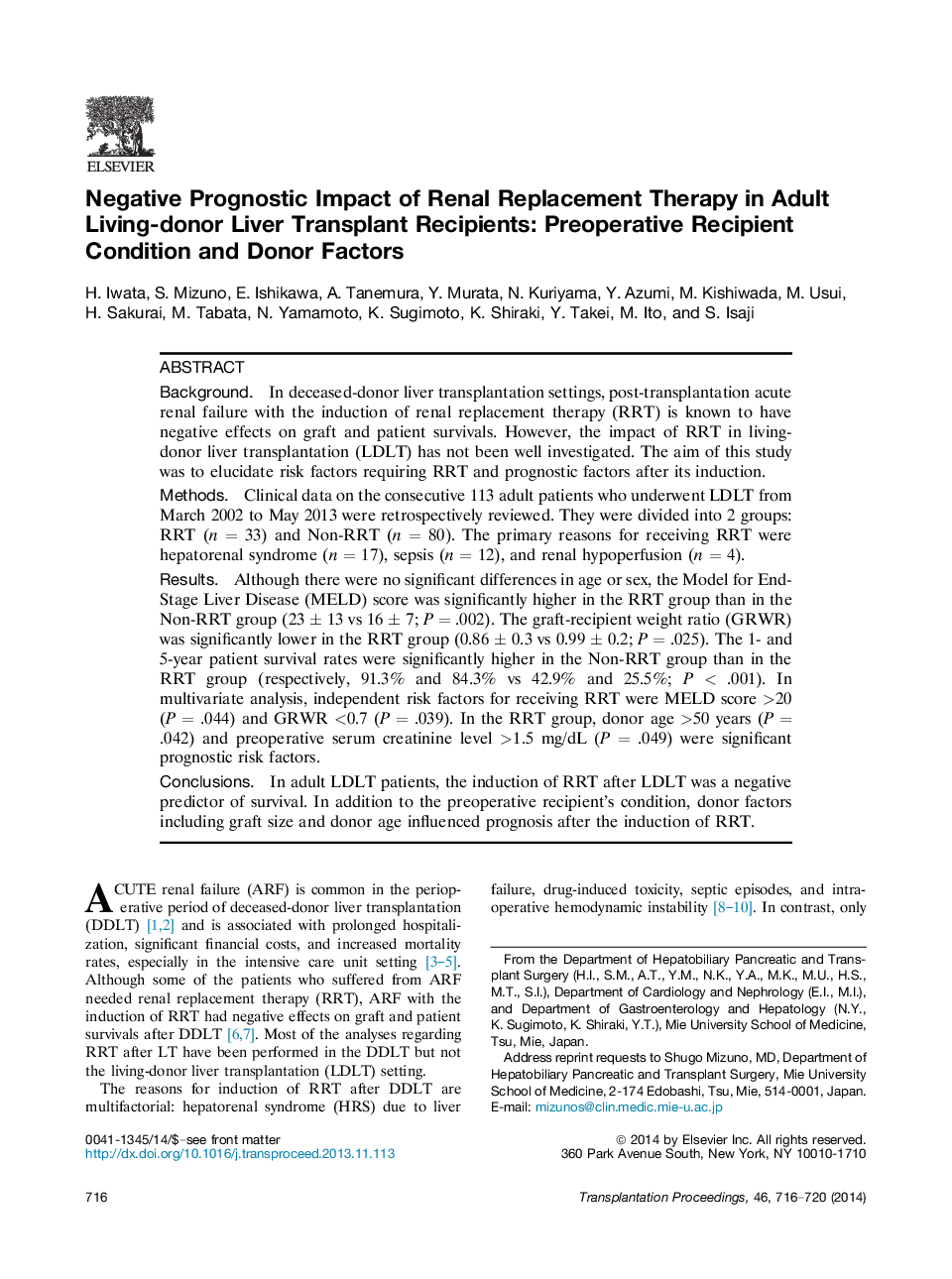| Article ID | Journal | Published Year | Pages | File Type |
|---|---|---|---|---|
| 4258378 | Transplantation Proceedings | 2014 | 5 Pages |
BackgroundIn deceased-donor liver transplantation settings, post-transplantation acute renal failure with the induction of renal replacement therapy (RRT) is known to have negative effects on graft and patient survivals. However, the impact of RRT in living-donor liver transplantation (LDLT) has not been well investigated. The aim of this study was to elucidate risk factors requiring RRT and prognostic factors after its induction.MethodsClinical data on the consecutive 113 adult patients who underwent LDLT from March 2002 to May 2013 were retrospectively reviewed. They were divided into 2 groups: RRT (n = 33) and Non-RRT (n = 80). The primary reasons for receiving RRT were hepatorenal syndrome (n = 17), sepsis (n = 12), and renal hypoperfusion (n = 4).ResultsAlthough there were no significant differences in age or sex, the Model for End-Stage Liver Disease (MELD) score was significantly higher in the RRT group than in the Non-RRT group (23 ± 13 vs 16 ± 7; P = .002). The graft-recipient weight ratio (GRWR) was significantly lower in the RRT group (0.86 ± 0.3 vs 0.99 ± 0.2; P = .025). The 1- and 5-year patient survival rates were significantly higher in the Non-RRT group than in the RRT group (respectively, 91.3% and 84.3% vs 42.9% and 25.5%; P < .001). In multivariate analysis, independent risk factors for receiving RRT were MELD score >20 (P = .044) and GRWR <0.7 (P = .039). In the RRT group, donor age >50 years (P = .042) and preoperative serum creatinine level >1.5 mg/dL (P = .049) were significant prognostic risk factors.ConclusionsIn adult LDLT patients, the induction of RRT after LDLT was a negative predictor of survival. In addition to the preoperative recipient's condition, donor factors including graft size and donor age influenced prognosis after the induction of RRT.
